In October 2024, since the launch of the AI Meme—GOAT and the introduction of the AI Agent concept, Crypto began to accelerate its integration with AI. Concepts such as Game+AI, DeFAI, and AIAgent hive emerged in a torrent, with new conceptual projects appearing almost weekly, until January 18 of this year when Trump announced the issuance of MemeCoin, which directly drained market liquidity, prematurely bursting the CryptoAI bubble. Two days later, DeepSeek announced the open-source R1 model, and after a few weeks of fermentation, the AI concept stocks in the US market also saw their bubbles burst.
With just $6 million, one could create a large model, while retail investors still bottom-fishing CryptoAI with a market cap of $60 million were once defined by the community as "low IQ leeks." This trend became rampant, and coupled with the collective plunge of AI concept stocks in the US, the coin prices naturally spiraled into death, leading to a gradual silence of AI concepts in Crypto.
A quarter later, the clamor for CryptoAI returned to the market, and this time the return seemed to bring some new concepts.
AI Ecosystem Token Issuance Platforms Show Their Skills
Following the successful case of Pumpfun, Crypto sparked a wave of asset issuance platforms. During the previous AI Agent craze, frameworks and AI distribution networks/LaunchPads were the two areas with the highest FDV. However, as the developer community's framework concept, similar to Ai16z, developed to a certain extent, the community found that the capabilities of frameworks were quite limited, especially in capturing value in Crypto. Consequently, the surviving frameworks gradually transformed into LaunchPads. However, AI LaunchPads also faced challenges, primarily because the existing LaunchPads could not meet the issuance needs of AI products. To accommodate the next wave of AI's return, project teams began seeking solutions.
The Paradise of CryptoAI Infrastructure—Bittensor
Despite experiencing a situation where someone exploited a vulnerability in the SN28 subnet mechanism to turn it into a MemeCoin, pushing TAO into Meme Coin speculation, and ultimately being centralized by the foundation, over time, the foundation's control over the Bittensor subnet is expected to diminish. This has raised community concerns about its potential future transformation into a "attention network" incentive project. Long-term followers of the Bittensor project, known as "thinking weird," have also published articles claiming it is a scam.
Further Reading: "Opinion: Why Bittensor is a Scam, and TAO is Heading Towards Zero?"
However, from an investment perspective, the liquidity of the Bittensor ecosystem is better than that of other AI Agent ecosystems. For instance, in Virtuals, because LP and Virtuals are paired, this leads to higher volatility for liquidity providers. Investors in the platform's proxy tokens experience about 3% to 7% slippage. In contrast, when investing in dTAO subnet tokens, slippage is typically around 0.05% to 0.1%.
Because of this, VC or large fund participants in AI projects tend to prefer long-term investments in Bittensor. Just last week, former Messari analyst and Crucible Labs partner Sami Kassab announced the establishment of a fund dedicated to providing liquidity for Bittensor, alongside his friend Seth Bloomberg, who shares similar work experience.
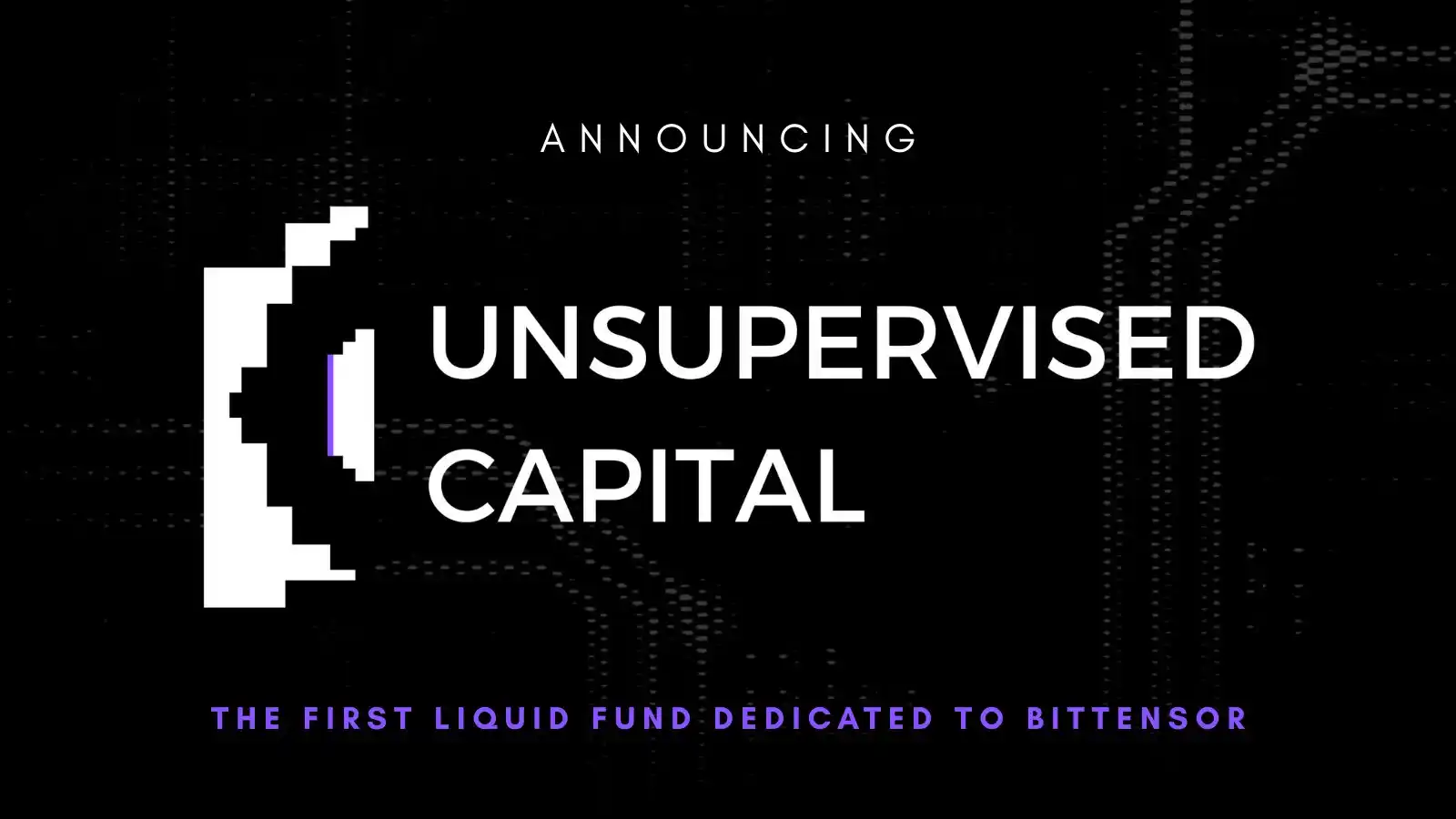
Currently, Bittensor's "first project team," Rayon Labs, has developed several products, providing a glimpse into the preferences of Bittensor project teams, which tend to be more "practical" and long-term.
SN64 "Chutes" offers a serverless way to easily deploy AI infrastructure. The project team claims that the previous AWS outage incident is a prime example of why we need "serverless." If reliant on centralized service providers, any interruption could cause AI applications to crash due to a single point of failure, and since Crypto is a money-related industry, the probability of loss is far greater than in traditional AI.
SN56 "Gradients" is a zero-code deployment platform for AI models, allowing users to train their own AI models (for specific use cases, image generation, custom LLMs). The recently launched v3 offers a competitive price compared to similar products.
SN19 "Nineteen" is a fast, scalable, decentralized AI inference platform.
The Creator of the AI Agent Protocol—Virtuals Protocol
As one of the most refined AI projects combining ecosystem building and value flywheel in the last cycle, the price of Virtuals Protocol has slowed down with the market's quiet flywheel rotation, leading to the bursting of a $4.5 billion market cap bubble, with a decline exceeding 90%, and a significant reduction in participants in the launchpad. However, Virtuals did not give up; during this AI bear market, they began to build.
First, Virtuals improved its project team construction ecosystem by launching the VPN plan "Virtuals Partners Network." From the beginning, Virtuals' plan was to bring more AI individuals into Crypto, and this plan connects multiple ecological positions, including investors, experts from various fields, scholars, and developers. Almost anyone with an idea can access resources from this plan, from investors to market makers, marketing, and even professionals. This "one-stop service" incubator can be said to be the best choice for anyone wanting to enter Crypto in collaboration with Virtuals.

To expand the influence and interactivity of AI Agents within the ecosystem, Virtuals has drafted a protocol called ACP "Agent Commerce Protocol," which can be seen as a concrete version of the previous hive concepts from projects like Swarm and Ai16z. ACP builds a commercial ecosystem composed of AI agents, creating a virtual nation where AI Agents can autonomously interact, collaborate, and trade. Notably, after this, Google also released a similar A2A concept, with the slight difference that ACP is connected by smart contracts, while A2A is connected by protocols.


In April, Virtuals just launched a new model for Virgen points and Genesis launch mode, allowing users to earn points by investing in Agents like Sentient and Prototype, holding Virtuals, or staking VADER. Points serve as the basis for participating in Genesis launchpad projects. The Genesis launchpad is a project initiation method based on the IDO model, where investment amounts are determined by the points users hold. Currently, this launch mode is not open to everyone but requires official review by Virtuals.
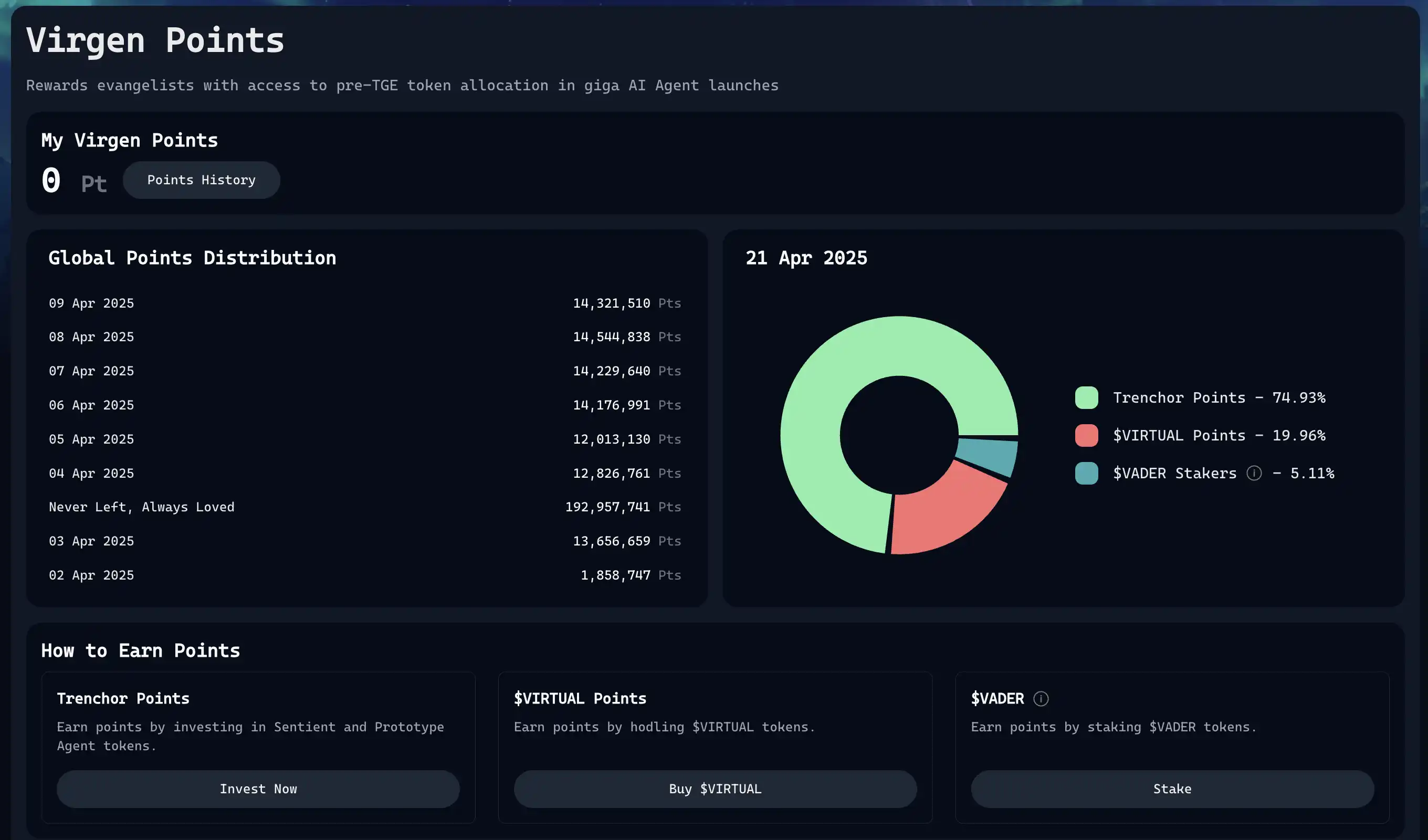
This model has several benefits. First, it increases user stickiness on the platform through rewards. In the words of founder Ethermage, "Our principle is to reward believers." Staking points to gain participation quotas for Genesis projects leads to a fairer initiation process, and participants are usually of higher quality, allowing projects to develop more sustainably.

Interesting Projects from Virtuals Protocol's Hackathon?
In addition to the projects on Genesis worth noting, Virtuals just announced the winners of this hackathon on April 21, with over 100 project teams participating. The judging panel was quite impressive, including Luca Curran, responsible for AI and DEPIN development at Base, KunPeng, who founded the Stanford Blockchain community, and Anand Iyer, a partner at Canonical Crypto, who interestingly has the tag "AI" on X.
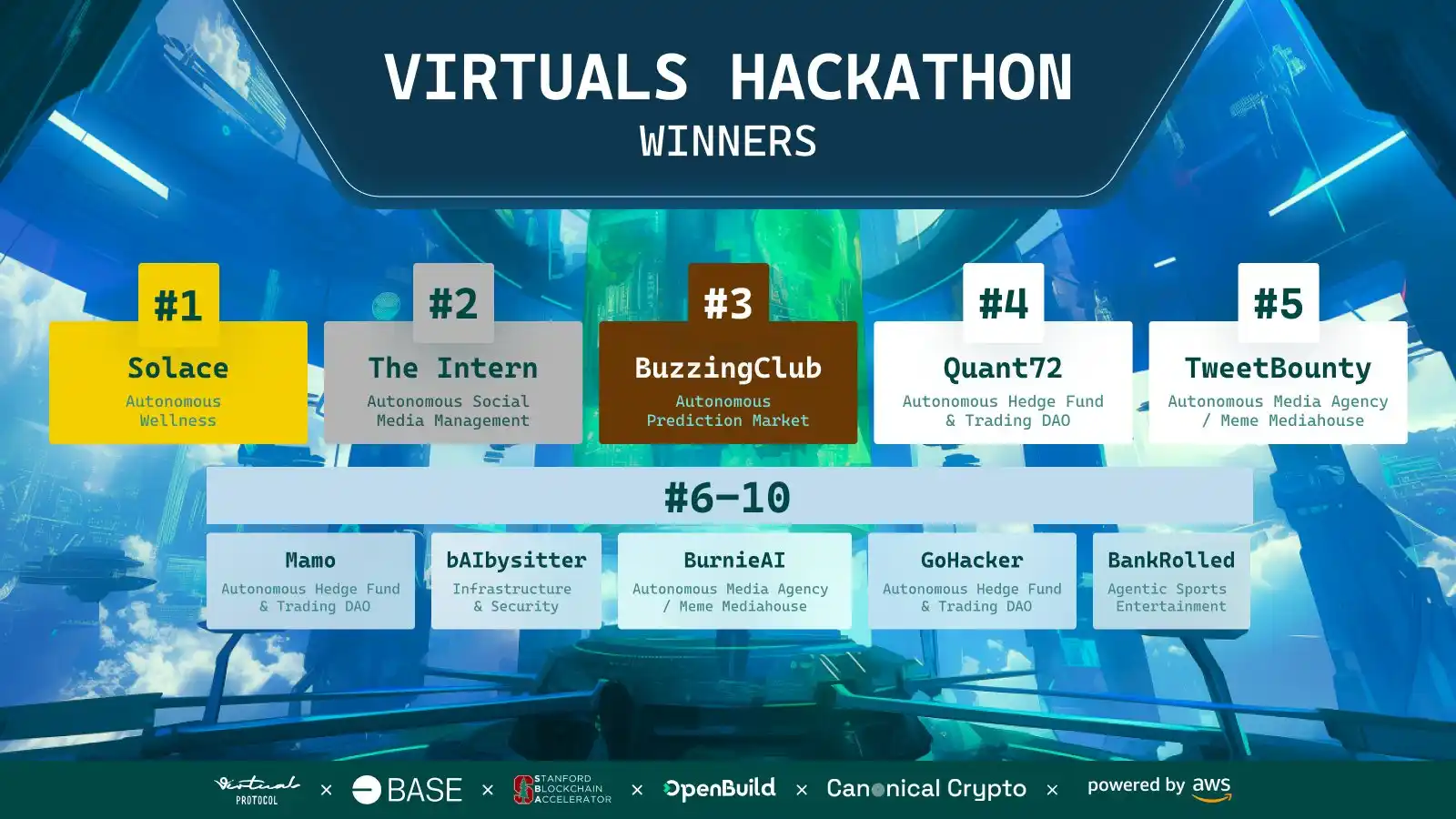
The Intern is an AI that assists with operations, capable of promoting, replying, and managing communities on X. It learns community culture through in-depth community engagement and can generate images using TADA. It has now partnered with Pudgypenguins to launch the Penguin Intern and operates its own Twitter account. Based on the quality of Twitter operations, if it were entirely AI-operated at this level and could be scaled, it would be a promising product.

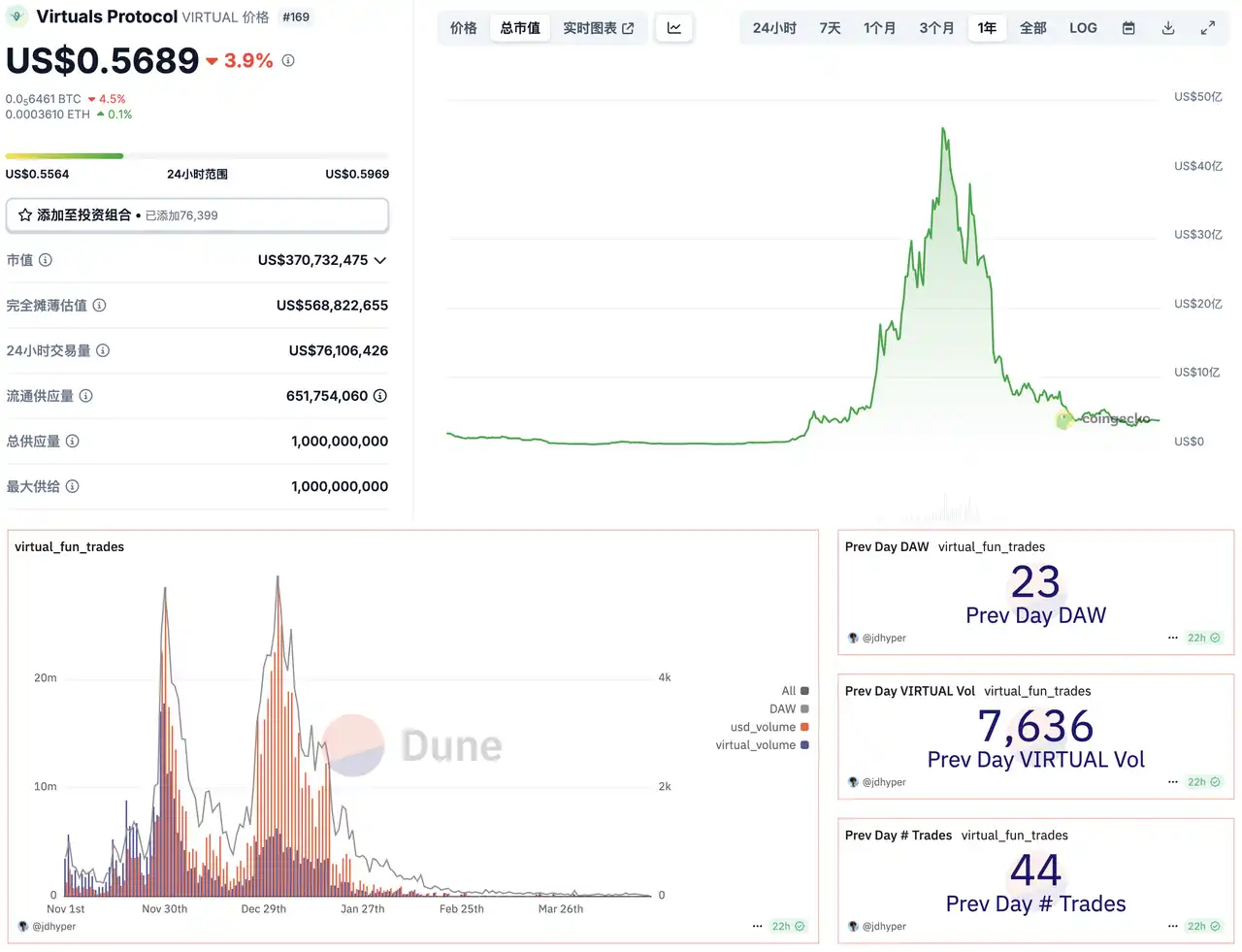
BuzzingClub is a prediction market platform where the project team believes that the future of prediction markets should be in the hands of participants, rather than a central authority. "Everyone should be able to freely create, share, and express their opinions." Therefore, Buzzing is more free compared to other prediction platforms.
On Buzzing, all users can create prediction markets by "proposing topics or questions," with rules generated by AI. Then, AI algorithms filter out some junk information and low-quality prediction markets, and finally, AI oracles automatically retrieve internet search data rather than manual data to determine the results of prediction questions.

Burnie is a coding learning platform that can enhance the skills of users who want to learn coding, while players can earn rewards by completing tasks he publishes.
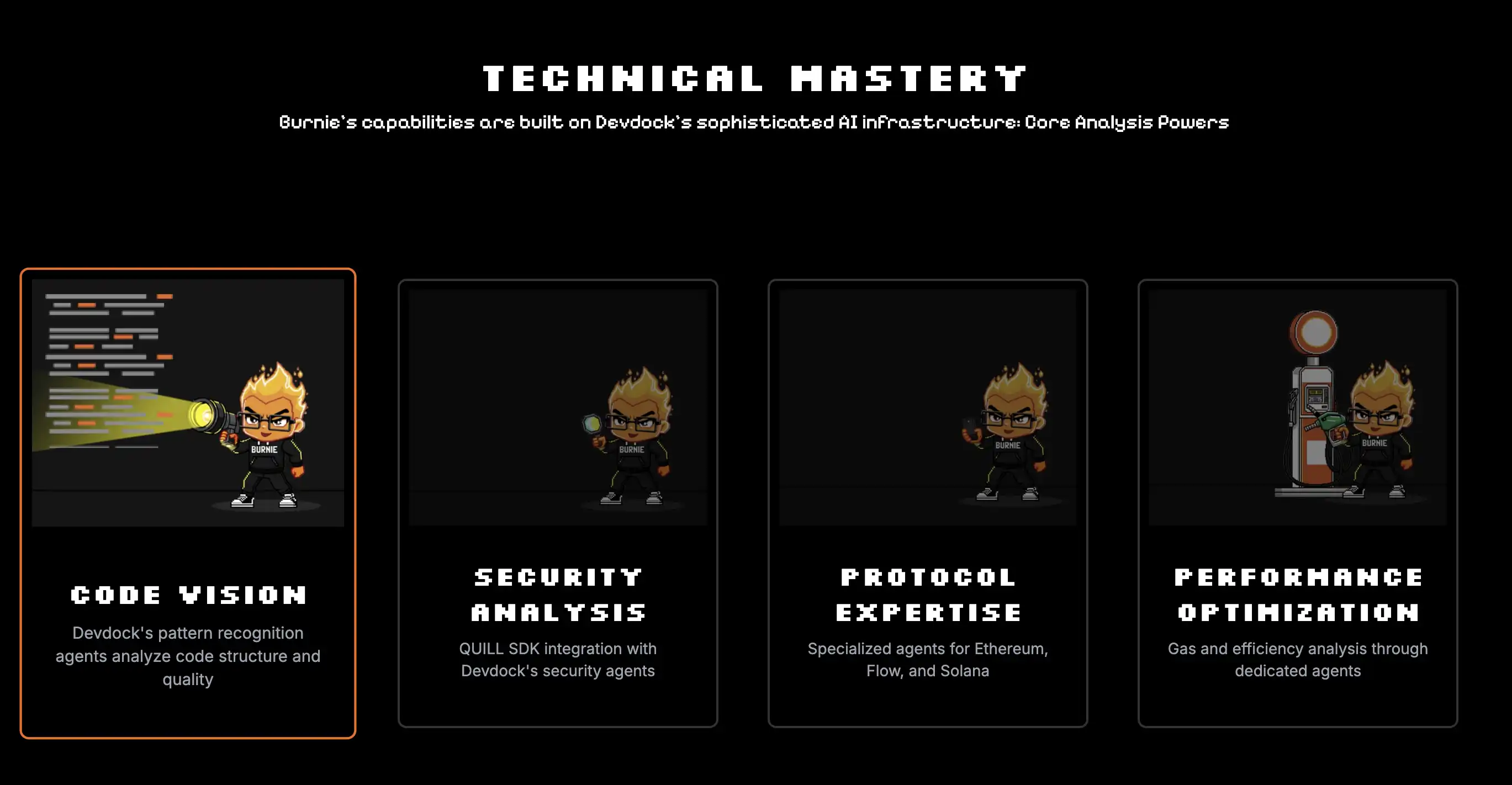
Inspiration is the App, Layout in the Post-AI Application Era
After the development of frameworks gradually stagnated, Arc and Ai16z also transformed into distribution platforms for AI Agents. Since the launch of Arc's distribution platform Forge, it has gone silent after its first product, AskJimmy. Ai16z's AutoFun went live a few days ago, but the currently publicly supported projects have not yet launched, and its development remains uncertain. From the product framework perspective, AutoFun seems to lean more towards creating a UGC cultural platform for communities, which does not differ much from traditional LaunchPads in terms of value retention.
Arc plans to launch the Agentic App Store Ryzome, while Myshell already has an existing AI App Store. The former has not officially launched yet, and the latter also lacks activity, with most of the products being quite similar.

In this context, dev.fun, which previously emerged with the AppFi concept, appears more orthodox. At first glance, this platform, with its color scheme and UI similar to Pumpfun, seems to have more vitality on some level. Although, in terms of coin price, dev.fun has also seen a significant decline during this cycle, it is surprising that nearly 13,000 Apps have been created on this platform.
dev.fun offers the ability to generate Apps through chatting with AI, "similar to the previously YC-invested Replit." Users can issue project/Meme tokens and choose trading pairs themselves. Currently, the most supported project, Buidl, has a total of 1,400 Apps and has run nearly 70,000 times.
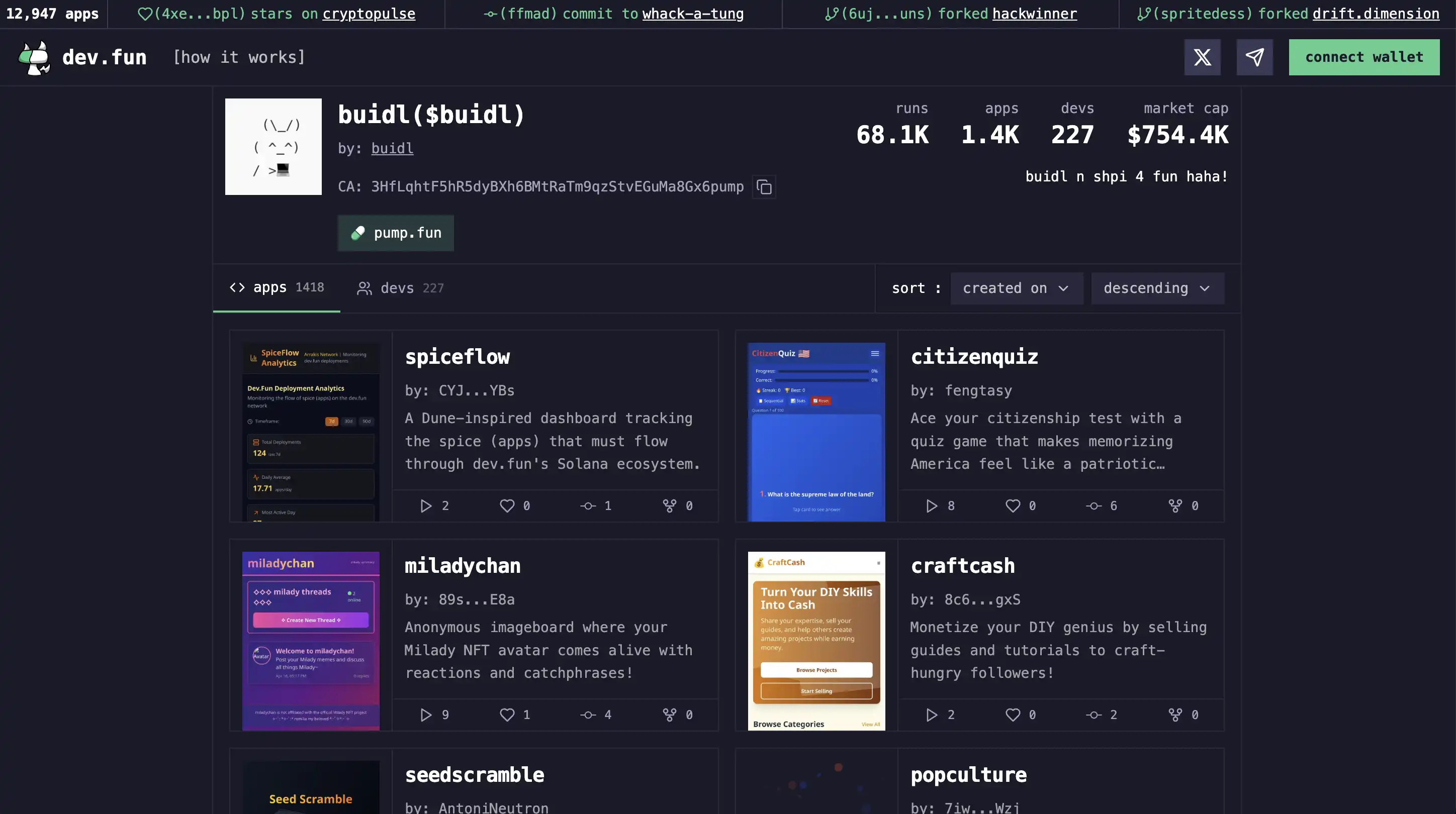
What AI Does the Crypto Market Prefer Now?
Currently, popular projects in the market can be divided into several categories. The first is development tools, including frameworks, AI Coplit programming tools, and MCP infrastructure. The second is consumer AI applications, including AI Agents, games, DeFAI "Alpha signals, funds, automated LP," and GambleFAI. The third is decentralized AI infrastructure, such as decentralized computing, verification, storage, etc. The first two types are usually more favored by retail investors, while the third is the preferred choice for VCs or investors, as these projects often require a relatively high valuation to sustain.
Development Tools
These projects have a broader range of use cases and project concepts, but they are often the first choice for scam projects because, for retail investors, there is no "visible" product. The feedback cycle for these products is often longer, and whether they are "usable" or can generate viral spread ("someone uses it") is key. Therefore, creating such products requires high technical and marketing skills from a team.
The recently popular MCP project Dark is one of the projects that has done both well, launched under the influence of MTN DAO, and delivered a "visible" game product, "Dark Forest," within two weeks.
In this field, the most widely spread project in the market is probably Solana's "favorite child" SEND AI, which gained fame by hosting a large AI hackathon previously organized by Solana, and the Solana Agent Kit has been used in many products. ALCHEMIST AI is also continuously building, having dropped to a market cap of $1.4 million in February, it has now returned to a market cap of $14 million.
Autonome is a platform that allows developers and users to build, deploy, and distribute verifiable AI Agents without code, produced by the Rollups protocol AltLayer. It has been active since the last cycle and has yet to issue tokens.
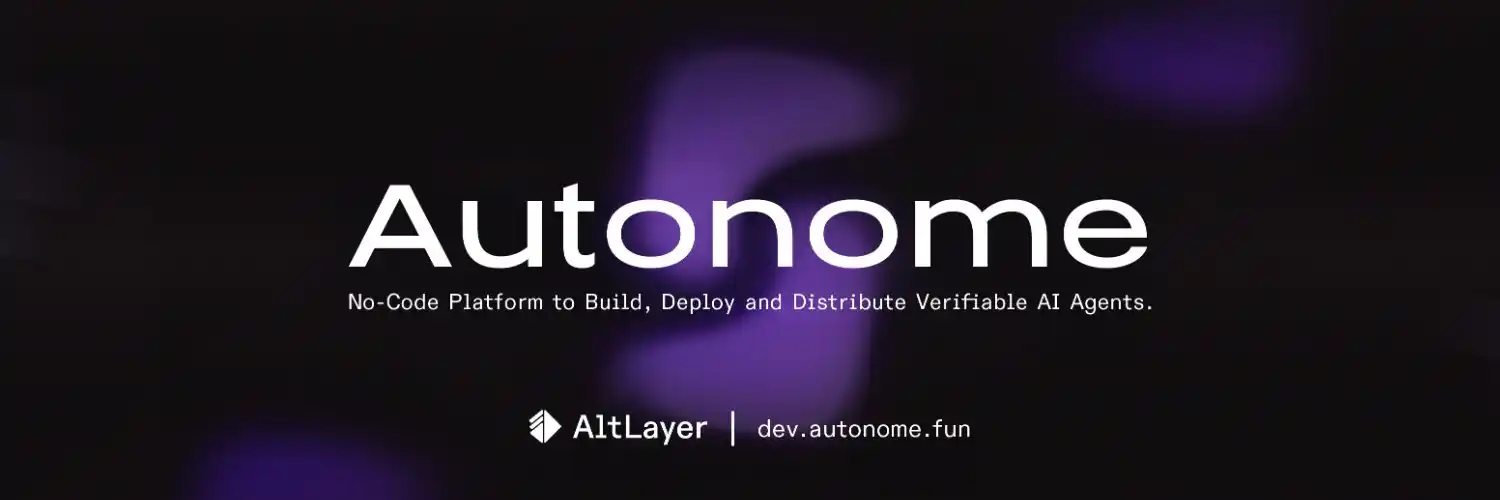
Consumer Artificial Intelligence
Games

Recently, Treasure announced that it would shift the focus of its project from game chains and game operations to AI+NFT. Today, SMOL provided its first answer, announcing the release of the "Virtual Companions" feature, which can turn NFTs into AI Agents that can use social media and play GameFi or DeFi on their own, and created a market for AI Agents to buy and sell skills, memories, and other information.

Community player Fairu's in-game screenshot
The first game launched is Abstract's on-chain RPG game Gigaverse, which has received generally positive feedback from the community after testing. Consequently, Treasure's coin price has also rebounded accordingly, having dropped to a market cap of $20 million after announcing its exit from the GameFi business, it has now returned to a market cap of $80 million. It is believed that in addition to expectations for the technology that AI-ifies NFTs, the model of AI Agents playing GameFi may be more appealing. The issues of no one playing for GameFi project teams and games not being fun for players may potentially be resolved by assetized AI Agents in the future.
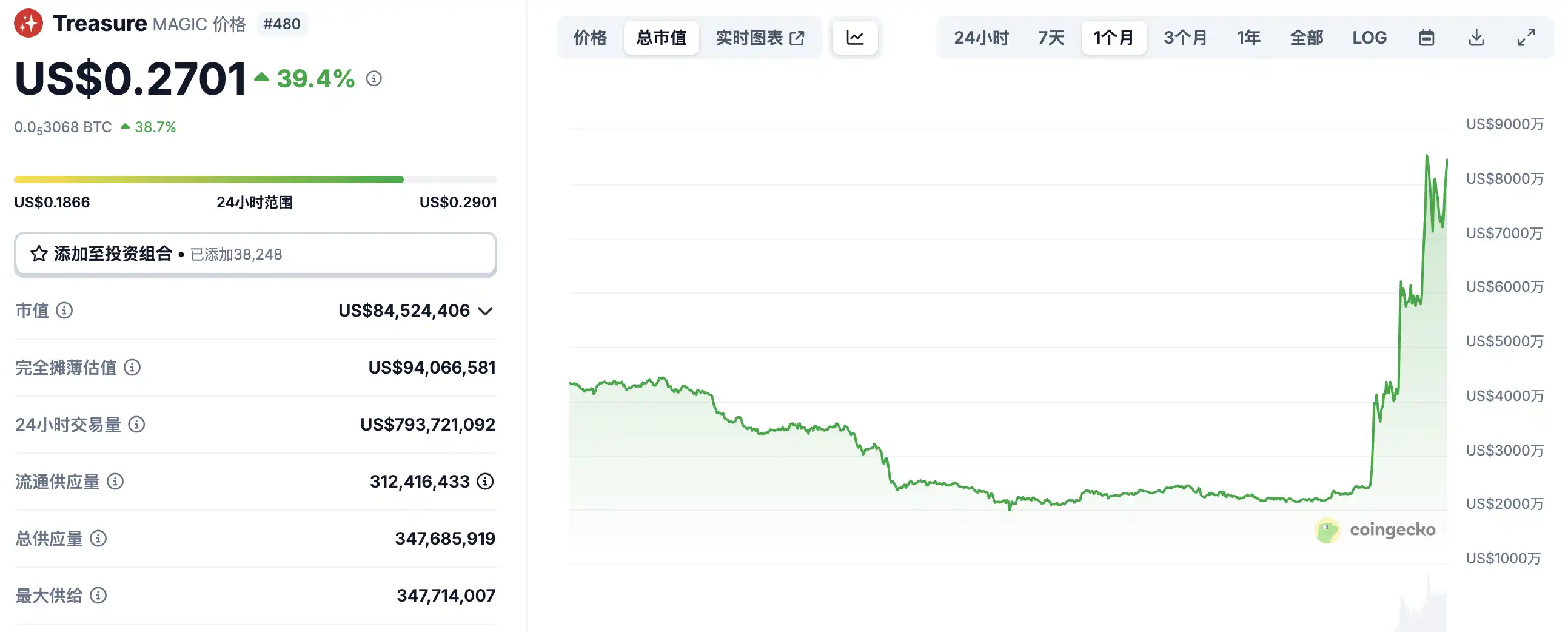
DeFAI
After 18 months of development, Almanak announced on April 17 that it would implement the token's TGE in 2025. Almanak is an end-to-end platform that allows users to create, optimize, and manage complex financial strategies using AI agents. Tasks such as market data analysis, strategy formulation, optimization, and high-speed execution can all be automated. The team has received support from numerous top venture capital firms and advisors, including RockawayX, Delphi Labs, Hashkey, AppWorks, Matrix Partners, and Bankless Ventures.
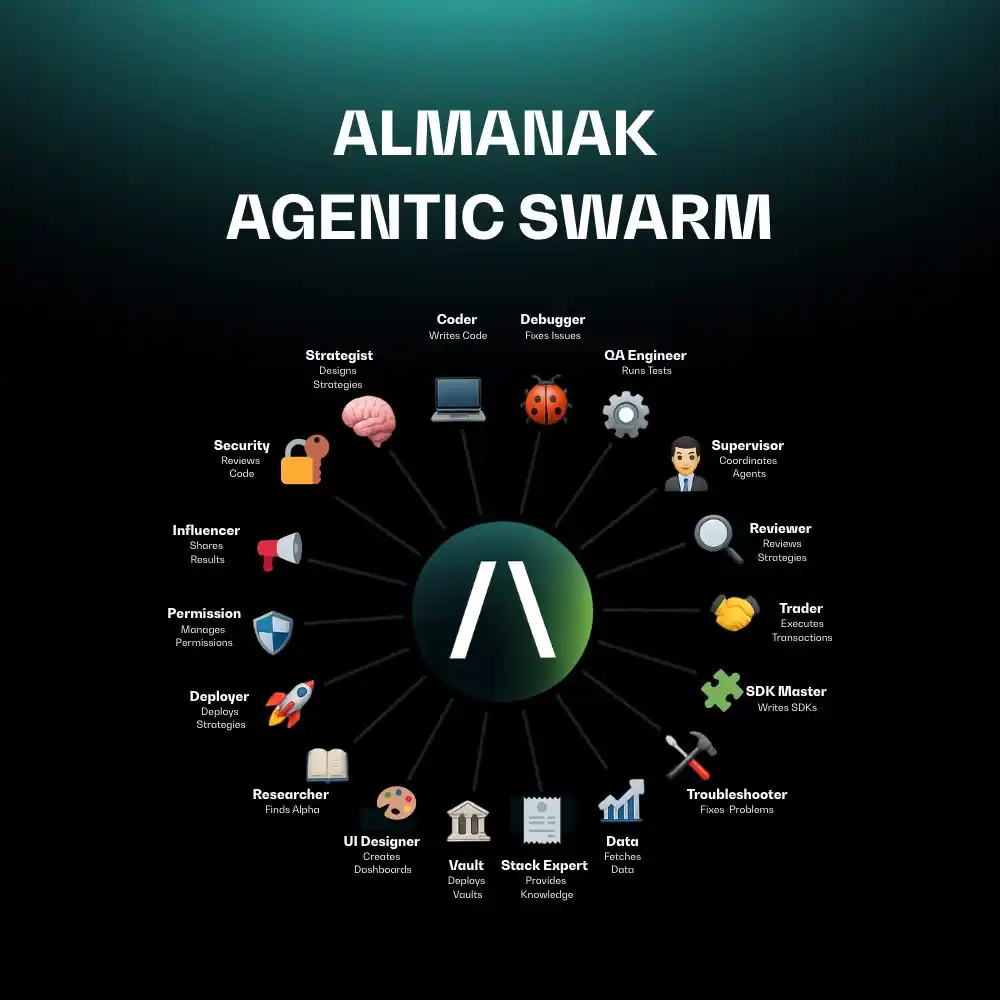
GambleFAI
Sportstensor is the SN41 subnet on dTAO, an AI platform for sports event predictions that allows participants "miners and validators" to collaborate in developing and optimizing sports prediction models. Participants with better models and datasets can profit from predicting the outcomes of sports events. Users can interact with the project by participating in "model development" technically or "using prediction results" non-technically.
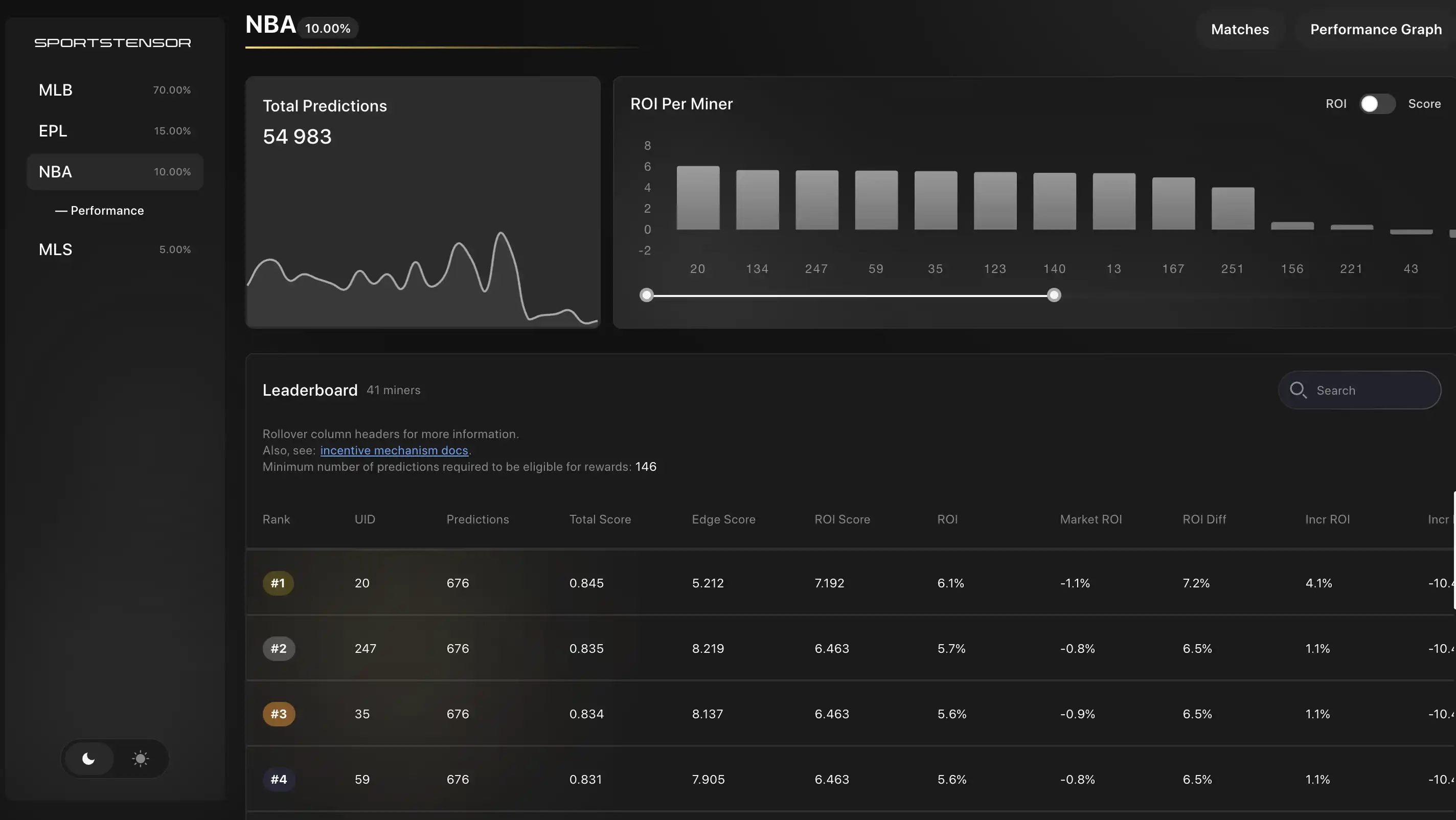
For example, in an NBA game between the Celtics and the Magic, the ratio is 0.92:0.08. If you bet on the Celtics, "the team favored by the public," following the market odds, your winning probability is about 92%. Even with such a high winning probability, most people's return on investment is negative after multiple bets. Although the teams favored by the public often have a higher winning rate, the odds are also higher, which means that even if the prediction is correct, the winnings will be less. People tend to place bets on the teams they favor, leading to a very low winning rate for the underdog teams. This means that if you bet correctly on an underdog team, you can earn a lot of money.
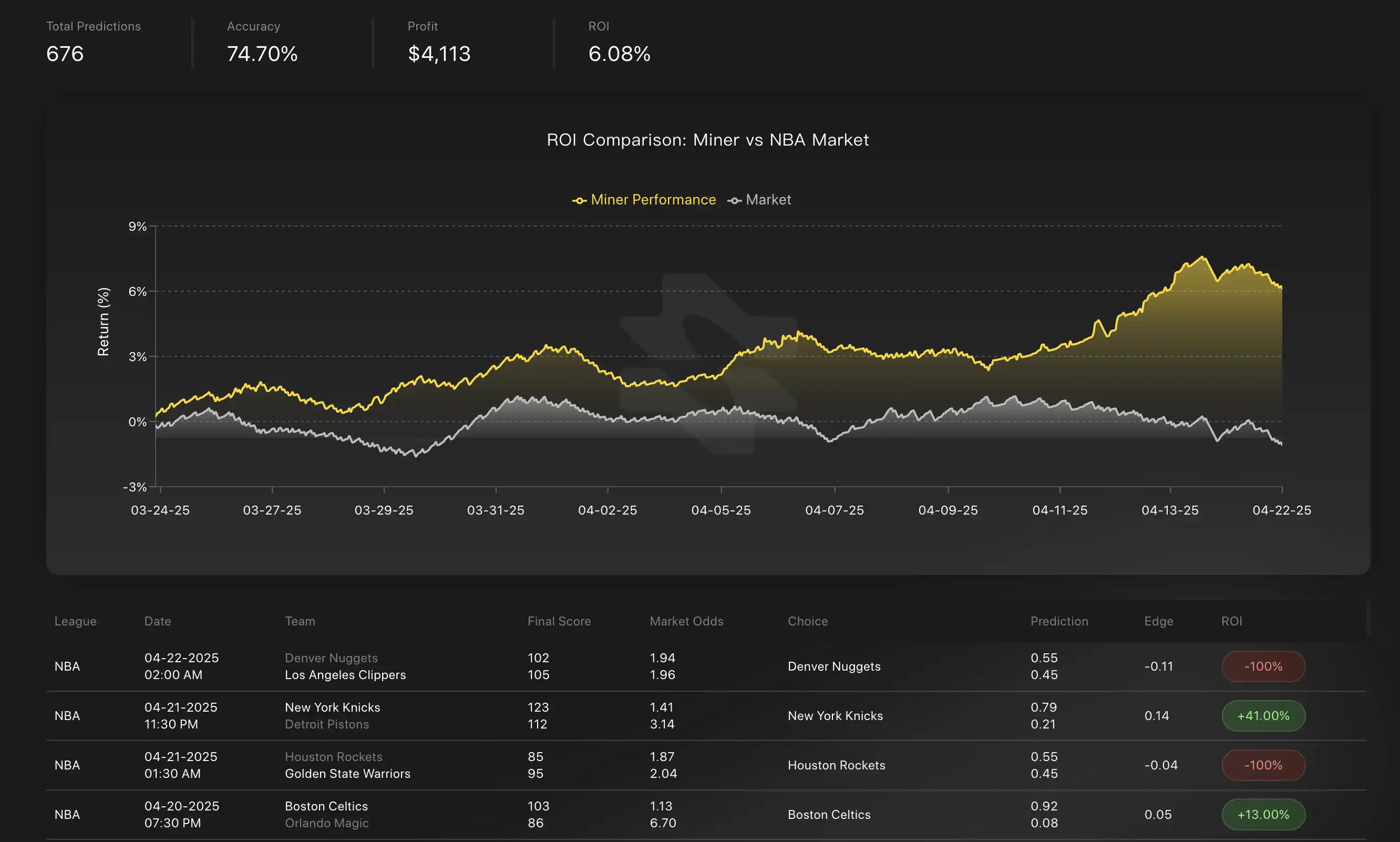
This is the advantage of the Sportstensor model, where miners use their own data to run their own machine learning models to achieve the best results. Then, Sportstensor takes the average/median of these results and uses it as an intelligent indicator to identify market advantages. The difference between the odds predicted by the model and the market odds is the portion that users can profit from in the long run.

DeAI Infrastructure
This type of product is almost one of the earliest concepts of the fusion of Crypto and AI, like projects such as Grass. Numerous similar products have appeared before, but they have been difficult to sustain. The key to decentralized computing power is how to optimize synchronized computing power while keeping the price lower than traditional computing power providers. The key to decentralized training is the cost of data transmission itself, which is hard to achieve during periods of inadequate infrastructure. However, once realized, it will be a highly potential down-market, thus attracting significant attention from VCs.
PrimeIntellect was co-founded by Vincent Weisser and Johannes Hagemann, both of whom were members of the leading Desci project VitaDAO. PrimeIntellect is a platform that commercializes computing power and models. The investment lineup is quite luxurious, with the seed round led by CoinFund and Distributed Global, raising a total of $5 million, while the second round of financing was led by Founders Fund, raising a total of $15 million. Among the individual investors are industry influencers such as Polygon co-founder Sandeep Nailwal and well-known investors including former Coinbase CTO Balaji.

Recently, renowned OpenAI researcher Yaoshunyu published an article titled "The Second Half," stating that we are in the middle of the AI era, and we are about to enter the second half. If the first half of AI solved gaming and exam answering, the second half of AI will build valuable products worth billions or trillions of dollars. There will certainly be corresponding opportunities for CryptoAI within this context.
So let's look forward to it, welcome to the second half.
免责声明:本文章仅代表作者个人观点,不代表本平台的立场和观点。本文章仅供信息分享,不构成对任何人的任何投资建议。用户与作者之间的任何争议,与本平台无关。如网页中刊载的文章或图片涉及侵权,请提供相关的权利证明和身份证明发送邮件到support@aicoin.com,本平台相关工作人员将会进行核查。




